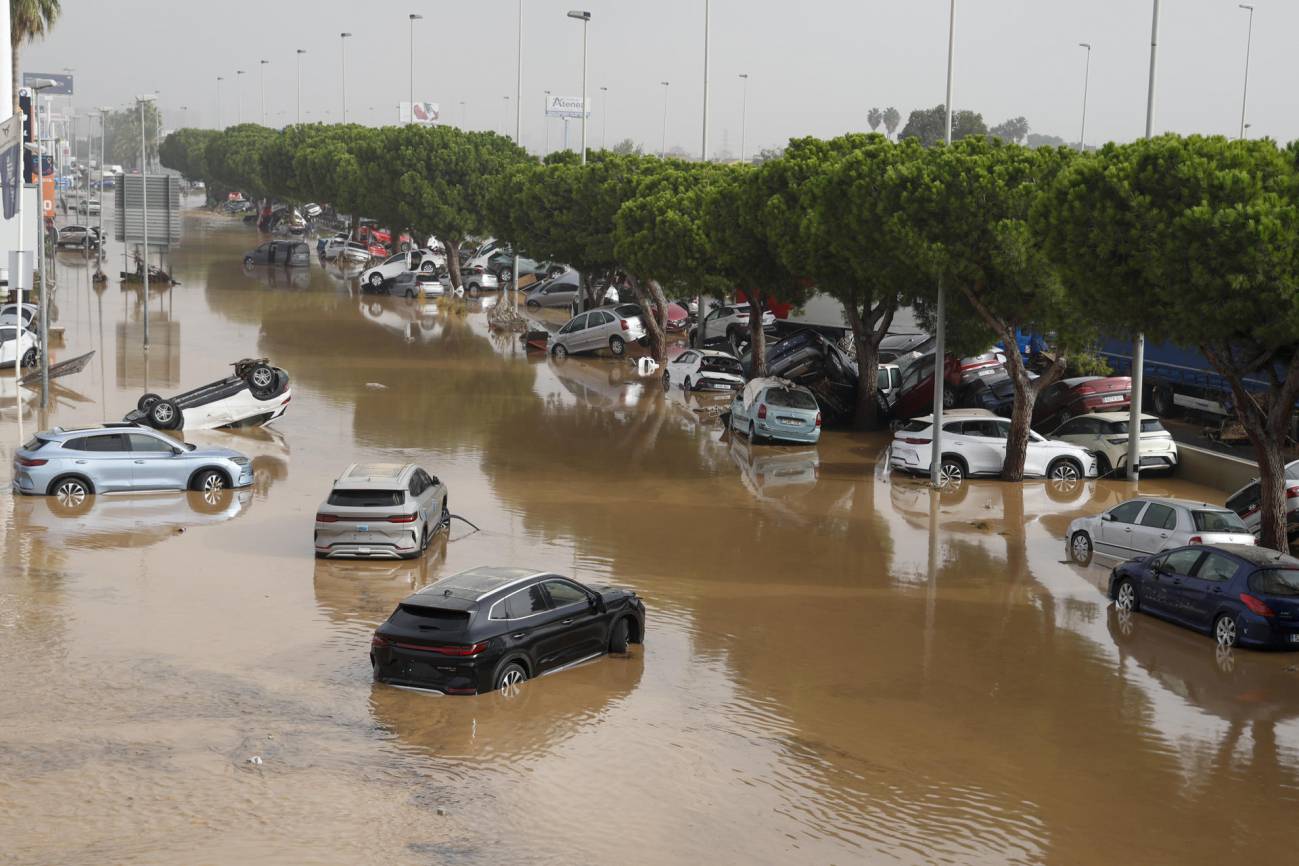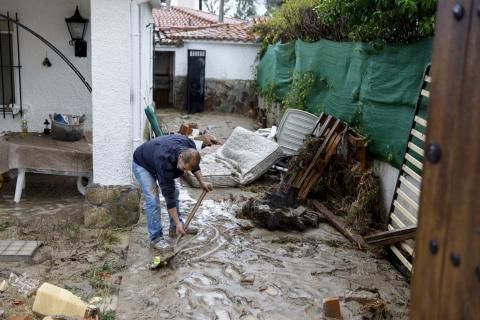Spain is a country used to extreme weather phenomena. Due to our geographical location, we have historically had to deal with heat and cold waves, strong wind and wave storms, torrential rains, heavy snowfalls and very intense droughts. These weather events, which have always existed, are increasing in frequency and intensity as a consequence of anthropogenic climate change.
Undoubtedly, one of the most tangible aspects of this climate change is the increase in temperature on a global scale, which can also be observed in Spain. In Spain, the increase in temperature experienced since the 1960s is estimated at more than 1.5ºC.
This figure, which may not seem very important, is actually a significant increase in the number of days in which we experience heat waves: with each passing decade, the duration of heat waves in our summers increases by three days. But they also affect larger areas and, of course, are more intense; these extreme heatwaves turn around every decade and increase in temperature by around three tenths of a degree. Needless to say, the impact of heatwaves on people's health, with thousands of deaths attributable to high temperatures, as well as on the environment: droughts are exacerbated and the risk of fires increases exponentially.
But it is also changing the way it rains. Although, in absolute terms, the amount of rain we receive on the Iberian Peninsula is roughly the same as it was at the beginning of the 20th century, we cannot ignore the fact that there are differences: in the south of our territory it rains less, especially in winter; furthermore, there are indications that dry periods are longer and that, when it rains torrentially, it does so with more virulence. This makes perfect physical sense, as climate change means that there is more energy available in our seas and atmosphere, which, given the right conditions, can translate into huge amounts of precipitation in a short time.
Droughts are also longer, and there is also the added component of rising temperatures: with the same amount of precipitation scarcity, a current drought is more severe than if it had occurred in past decades, because higher temperatures favour evaporation and therefore less water resources are available for ecosystems.
The increase in these adverse events is directly related to anthropogenic climate change, as scientific evidence attests
The increase in all these adverse phenomena, and others that do not (for now) affect us directly, such as the increased occurrence of more intense tropical cyclones, is directly related to anthropogenic climate change. This is attested to by scientific evidence, which shows how these natural hazards are already more frequent and intense and will continue to be (if not remedied, even more so) in the future.
But the title of this tribune raises a question that we now bring up: are extreme weather events the only threat related to climate change? Where are we going with this question?
The adverse effects of denialism
We know that ever since the scientific community began to warn of global warming, voices have been raised denying that such a phenomenon was taking place; then, that it was of human origin; now, it is denied that ‘it is such a big deal’ or the information is twisted by claiming that ‘there have always been climate changes’. Of course there have been. But none as rapid as the current one, which prevents ecosystems, and perhaps humans themselves, from being able to adapt to the speed of change.
Despite the increasingly overwhelming evidence, not only have the denialist messages not ceased, but they have also found an important loudspeaker in certain social networks, often protected by anonymity and replicated by armies of bots or fake accounts. And here we come across the other threat referred to in the title: not only do we have to deal with the adverse effects of climate change, but also with its denial.
Western countries, including Spain, identify disinformation as one of the greatest threats to their democratic systems today. ‘Fake news’ spreads its tentacles to all current affairs and climate change is no exception. If we deny the existence of a problem, in this case the increase in the frequency and intensity of adverse weather events, we will hardly be able to find a solution and we will not even be able to work on adaptation.
But there is more: in this disinformation strategy, the attempt to discredit the scientific community in general and, in this case, the people who research climate or make weather forecasts, plays an important role. There are various ways of doing this: it can begin with news that is, in principle, innocent, or even seem to us to be sympathetic, such as a young man being able to anticipate an entire meteorological service by predicting a heavy snowfall that, apparently, only he was able to see and, moreover, by ‘observing nature’. David versus Goliath. The purity of tradition versus the obscenity of modernity. The countryside against the city. It's a pity it's all a big hoax. But after repeating it, many people may think: if only by observing nature it is possible to predict a big snowfall, why does Aemet need tens of millions of euros a year? By the way: science-based prediction models did predict the snowfall several days in advance.
In social networks, meteorology professionals are the target of hate messages and even direct threats
In addition to the threat posed by these messages, we meteorology professionals are the target of hate messages and even direct threats on social networks. Many of them take refuge in anonymity and we generally do not give them any importance. But when there are more of them or when they become more numerous, we can't help but worry and think ‘what if someone, just one of them, goes from threats to action? These threats have even been made by very prominent media personalities, who have called into question the work of great meteorological professionals, giving names and surnames and saying that ‘they will have to pay for it’.
And, this being very serious, the most worrying thing for me - the greatest threat - lies in the attempts to discredit those who, in theory, should ensure that a scientific-technical institution such as Aemet does its job in the best possible way in one of the most tragic natural disasters in Spain in recent decades, without being pressured or diverted from its main function: to protect lives and property. We all accept constructive criticism and need to reflect on what to do so that something like what happened never happens again, but resorting to hoaxes and disinformation means crossing a red line with dangerous consequences.
This way of acting seems to me to be a threat comparable to that of the natural phenomenon itself, that dana that caused torrential rains of unusual force, most likely boosted by the extra energy provided by anthropogenic climate change. I say comparable because trying to discredit a meteorological service is dangerous: if such a message gets through to a certain sector of the population, in the future these people may react with indifference, even disdain, to warnings of adverse weather events, without taking appropriate protective measures.
Moreover, the focus is diverted from what is important, which is to try to analyse what happened in emergency management so that what happened on the fateful 29 October never happens again. It is a sterile waste of time. It would be much more positive to start proposing solutions and not offload responsibilities onto others.
More investment for the benefit of society
In any case, at the State Meteorological Agency we continue to work to improve and adapt our weather forecasting and monitoring systems to the latest technologies: the radar network is undergoing a process of modernisation and expansion, with a complete renovation of the 15 existing radars and the installation of another four. This represents an investment of more than 64 million euros and will enable more accurate monitoring of storms. This radar network will be complemented by the deployment of new automatic weather stations. Both actions are part of a large-scale project that has been years in the making.
Work is also being carried out to improve supercomputing performance, which will allow for greater computing power and higher resolution weather forecasting models. To all this, we must add the presence in our skies of the third generation of Meteosat, thanks to the Eumetsat meteorological satellite programme, to which Spain, through Aemet, contributes more than 40 million euros a year. At the same time, the European Centre for Medium-Range Forecasts, an international consortium that develops the most advanced forecasting models in the world, is already working on the implementation of artificial intelligence in these models, which will be a major step forward, especially in the optimisation of resources.
The study of climate and the prediction and monitoring of adverse weather phenomena represent a major investment of resources that benefit the well-being of society as a whole
It is clear that the study of the climate, as well as the prediction and monitoring of adverse weather phenomena, is a major investment of resources, which is of benefit to the well-being of society as a whole. We must all be aware of the importance of public meteorological services in carrying out these tasks and I therefore ask that we all pull in the same direction.
In recent months we have seen that, unfortunately, this has not been the case. But, at the same time, those of us who work at Aemet have felt the affection and support of many professional colleagues, also from areas outside meteorology, and of many anonymous people who have supported us on social networks. On behalf of my colleagues and myself: thank you very much! We are a thousand professionals working honestly to address the threats of climate change. Let us hope that, from now on, we will only have to deal with the strictly meteorological ones.





